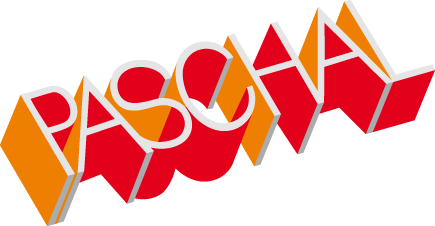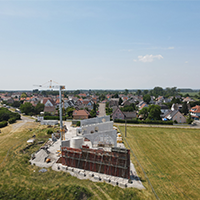Slanted, round, sustainable
PASCHAL formwork solutions for PlusEnergy buildings in Alsace
The new technical centre in the French municipality of Herrlisheim is being built to include a solar system on the monopitch roof, not only to cover its own energy requirements, but also to supply other public facilities. The construction company Léon used LOGO.3 wall formwork from PASCHAL to form the walls of different heights. PASCHAL's circular trapezoidal girder formwork (TTR) was used for the 60 m3 capacity cistern.
In terms of sustainability, the municipality of Herrlisheim – approximately 30 km north of Strasbourg – has ambitious plans; when the new technical centre goes into operation at the beginning of 2024, the French municipality from the Upper Rhine region wants to save energy costs and make a profit by operating a solar system. The Strasbourg architecture firm N01 Architecture therefore designed the new municipal technical centre on the outskirts of Herrlisheim as a plusenergy building with a solar roof and a cistern to collect rainwater.
Technical and community centre in one
The building covers an area of almost 1,400 square metres, is 75.5 metres long and 18.5 metres wide and has a large inner courtyard for the municipal construction vehicles. Inside the building there is space for offices, storage rooms and workshops. The municipality's technical services were previously spread across four locations, but the new building will centralise them all and consolidate storage. The centre will not only serve as a construction yard, but will also be open to the community as a venue for events. Clubs will be able to use the premises free of charge and there are plans to organise exhibitions. The earthworks started at the end of 2022, and the formwork operations took place from spring to August 2023. Here, the contractor, Léon Sarl from Auenheim, Germany, relied on the tried-and-tested formwork solutions from PASCHAL. The order size was approximately 375,000 euros.
TTR: for perfect rounding of the cistern
The literally sloping architecture of the entire building was given a counterpoint with the eye-catching round cistern. In addition to the solar roof, it lives up to the municipality's claim of operating sustainably. The cistern with a capacity of 60 m3 is intended to enable the recovery of 700 m3 of rainwater per year and save 1,750 euros in costs per year. The recovered water is sufficient to water flowers and plants. For the formwork of the cistern, 78 square metres of circular trapezoidal girder formwork with steel facing (TTR) were used, and the 3.5-metre-high cistern was constructed in two cycles. 'Our TTR circular formwork is ideal for producing not only polygonal, but also precisely round structures, as the panel elements can be very finely adjusted', emphasises Alfred Schweitzer, who acted as a specialist consultant for this project.
Sloping roof – straight joints
To install a solar system on the roof, the architects designed a monopitch roof that slopes towards the south. A total of 576 solar panels will then be installed on an area of around 1,100 m2, which will produce 230,000 kilowatt hours of electricity per year. Once the company's own requirements are covered, surplus electricity will be sold or used to supply other public buildings.
Around 372 square metres of LOGO.3 wall formwork were used to construct the nine walls, which Léon had rented from the head office in Steinach. One of the largest panel elements from the PASCHAL portfolio was used. The height difference between the loadbearing walls is around two metres. For this reason, two of the 340-cm-high panels were placed on top of each other on the higher side, plus a 135-cm-high panel element, to achieve a total shell height of 815 cm. On the lower side of the wall, a 340-cm-high panel was combined with the 270-cm-high panel element.
'This is the art of our formwork experts, designing the formwork plan in such a way that the workers can work with the least effort but achieve the best result', explains Alfred Schweitzer. The walls of the municipal technical centre were concreted in nine cycles. Alfred Schweitzer explains further: 'This is where our wide range of products pays off. The Léon employees were able to place shorter panels at the top to create the sloping roof and therefore did not have to work so low down. This makes their work easier when the wall thickness is only about 30 cm wide.'
The ingenious formwork plan and its precise realisation mean that the concrete pattern results in a uniform joint pattern – despite the sloping top edge. 'Planning and producing a sloping surface like the exterior walls is a particular challenge – for the formwork planners and for the company carrying out the work', emphasises Jan Skipka, Key Account Manager International Business, adding: 'Thanks to the even distribution of our panels, this has worked extremely well here. The joints are symmetrical and at the same height throughout'. Yannick Jungmichel, site manager at Léon in Auenheim, confirms: 'We are very satisfied with the concrete finish and the even tensioning point pattern. This is why the exterior walls with their exposed concrete look remain as they are. Only in some interior areas will the walls be further clad'.
'Flying' work platforms
Léon attaches great importance to a safe working environment for its employees. However, work platforms should be set up with as little effort as possible. The decision was therefore made to use the formwork solutions in combination with the multifunctional working platform Multip . The scaffolding brackets can be easily fitted to the panel elements when they are still on the ground. When moving the panel elements, the 'scaffolding-formwork combination' is simply moved as a whole by crane. 'The working platforms can be attached to the panel element in just a few simple steps. Once this has been done, it saves us having to dismantle and reassemble during concreting. This means we can erect the formwork and dismantle it even faster with the help of the Multip', confirms Yannick Jungmichel.
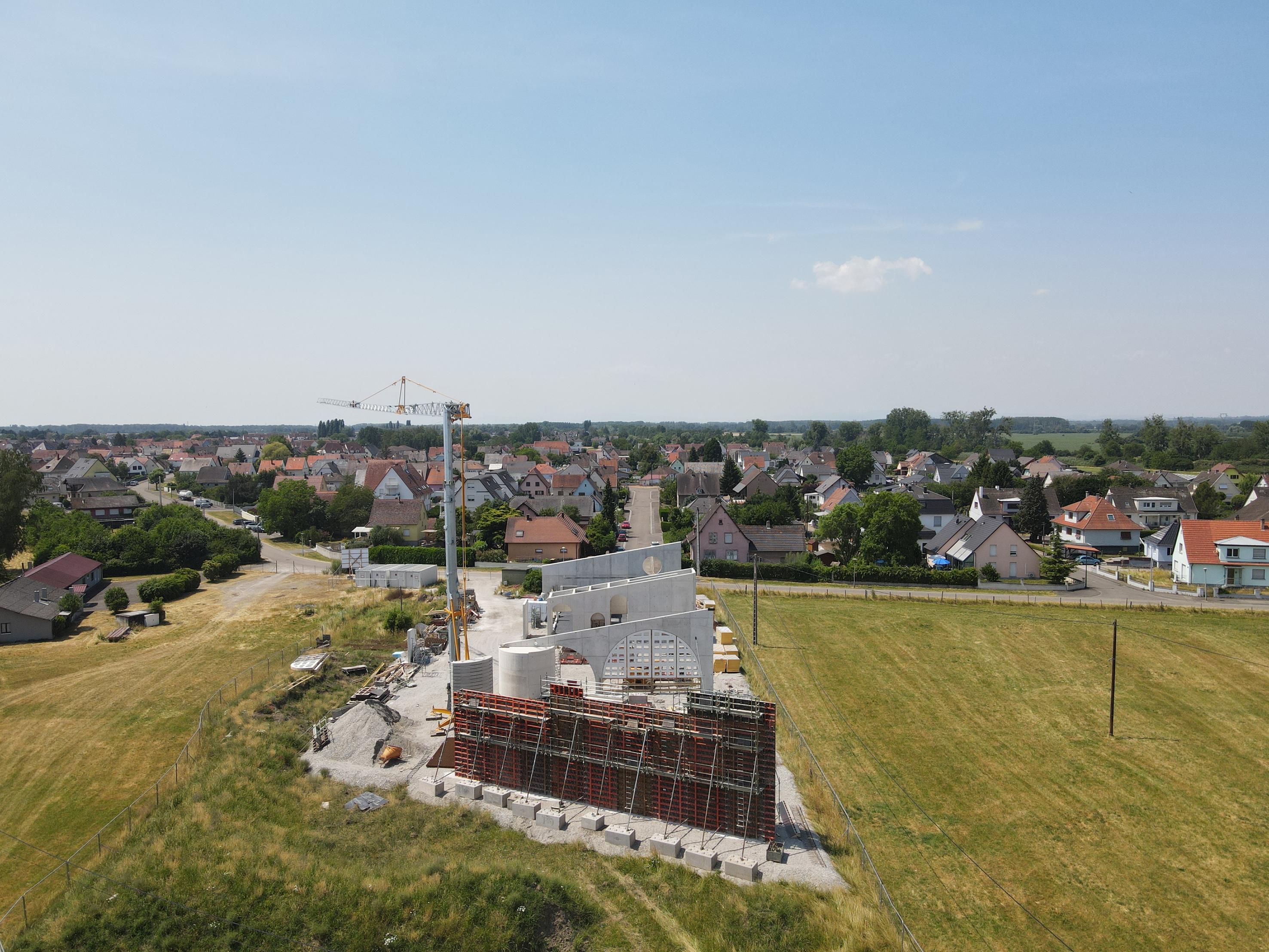
The walls of the new municipal technical centre in the French municipality of Herrlisheim were formed using LOGO.3 from PASCHAL. The plus-energy building was put into operation at the beginning of 2024.
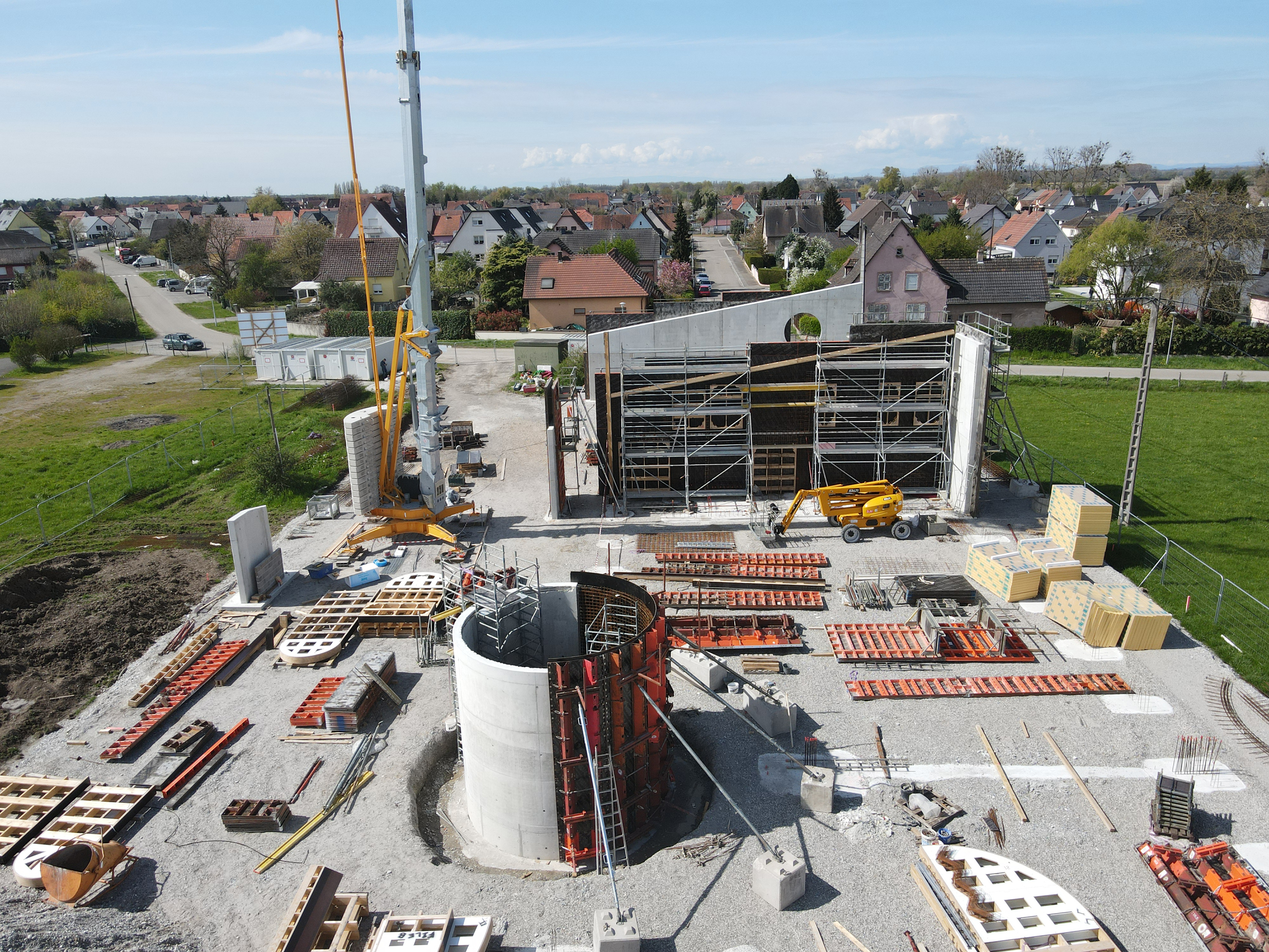
PASCHAL's trapezoidal girder formwork with timber facing (TTR) was used for the formwork work on the 60 m3 cistern; this system is expected to enable the recovery of 700 m3 of rainwater per year.
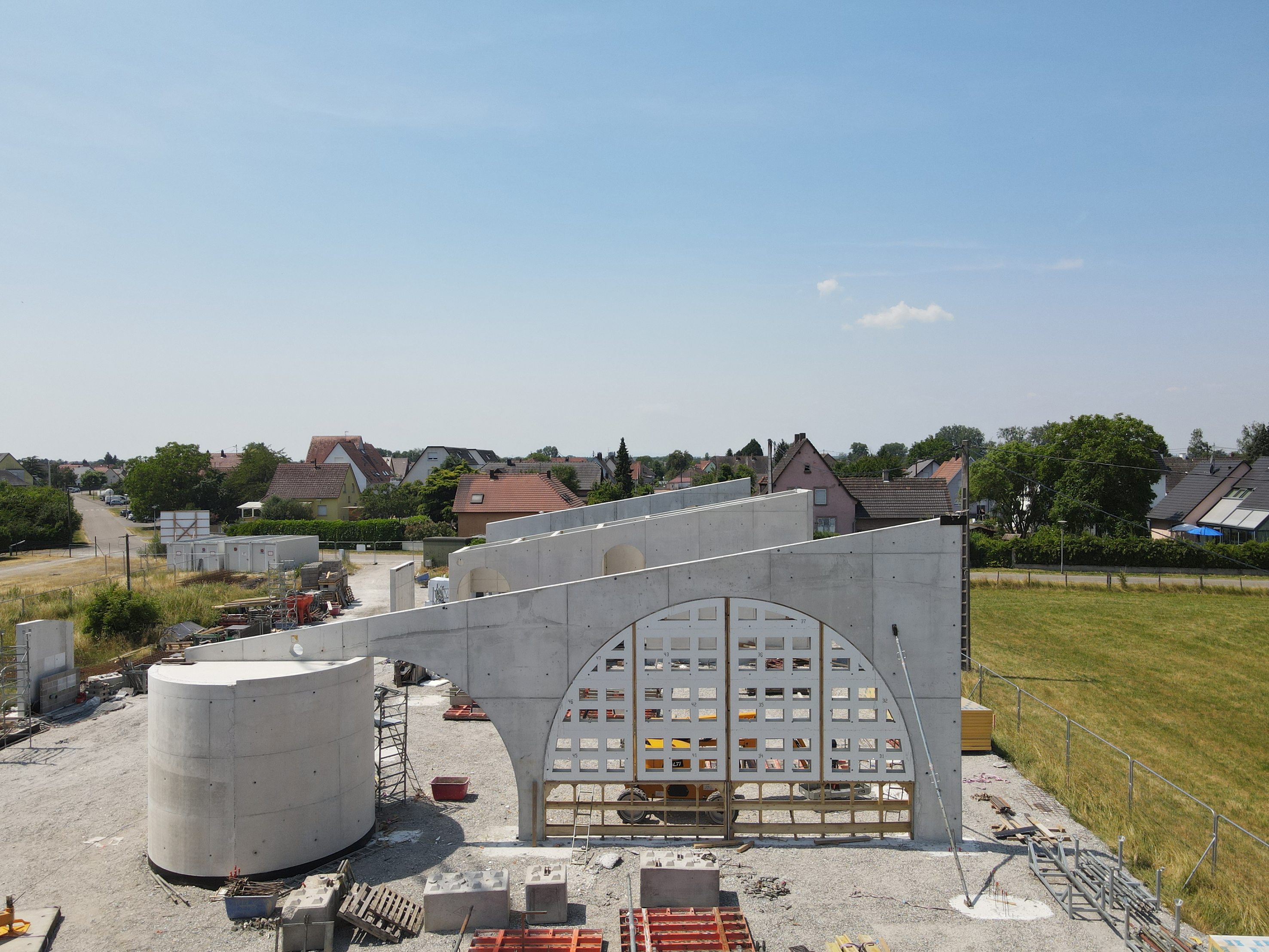
The technical centre was designed with a south-facing pitched roof in order to install a solar system. To pour the sloping walls, two 340-cm-high formwork elements plus a 135-cm-high panel element were placed on top of each other on the north side; on the south side, a 340-cm-high panel was combined with the 270-cm-high panel element.
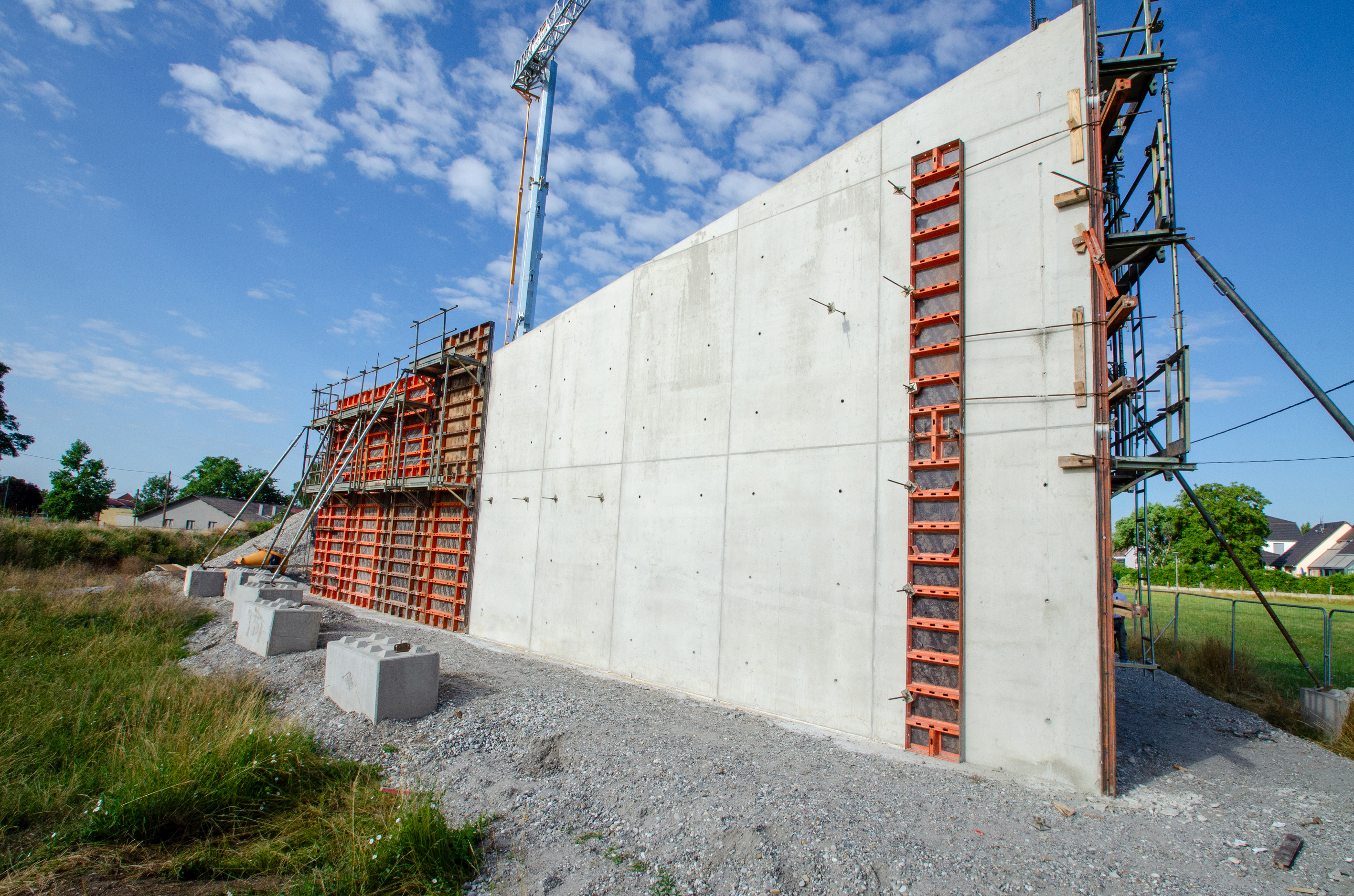
By implementing the sophisticated formwork plan, it was possible to achieve a uniform concrete appearance with an impressive symmetrical arrangement of joints and tie points.
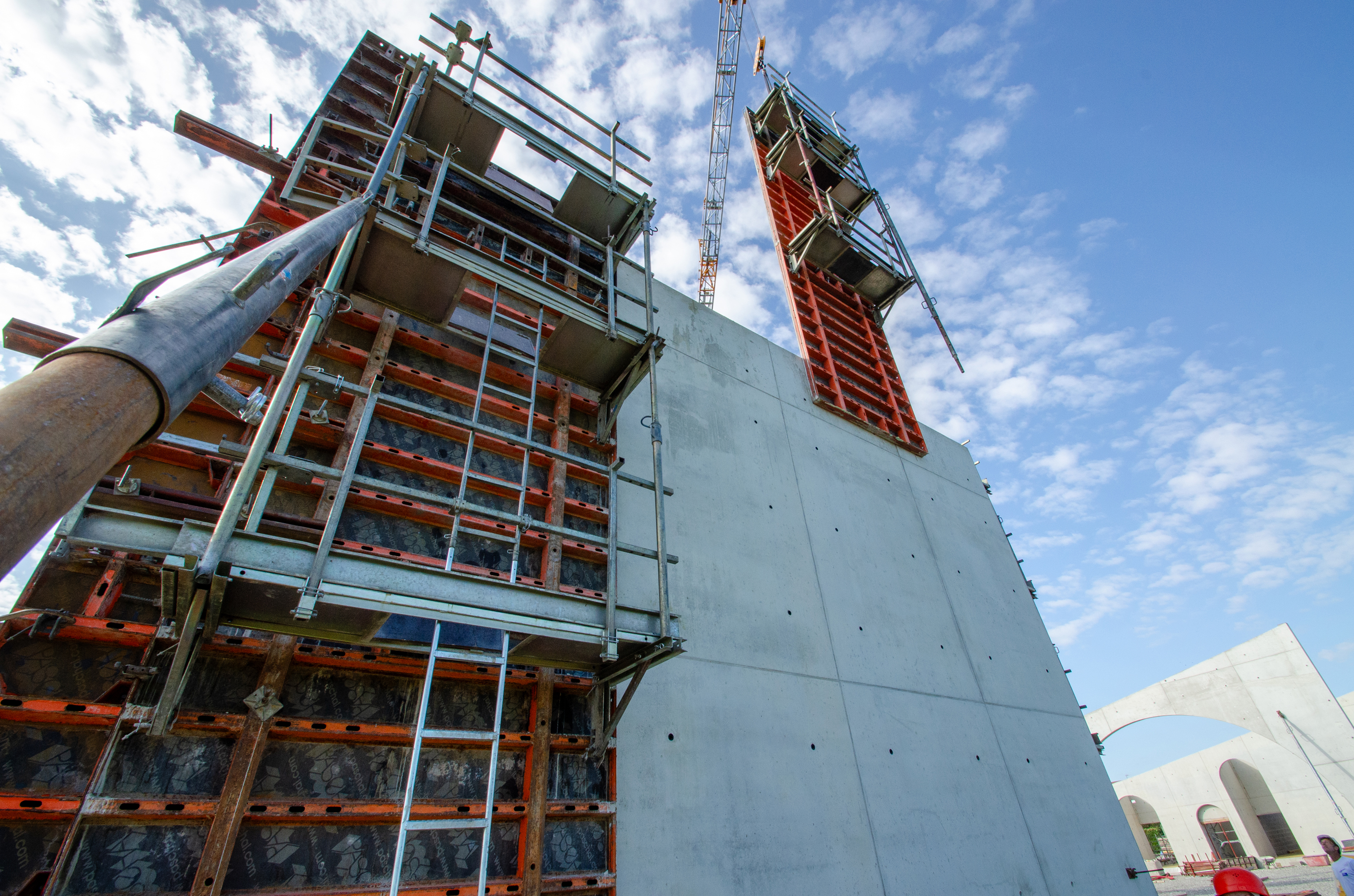
By implementing the sophisticated formwork plan, it was possible to achieve a uniform concrete appearance with an impressive symmetrical arrangement of joints and tie points.
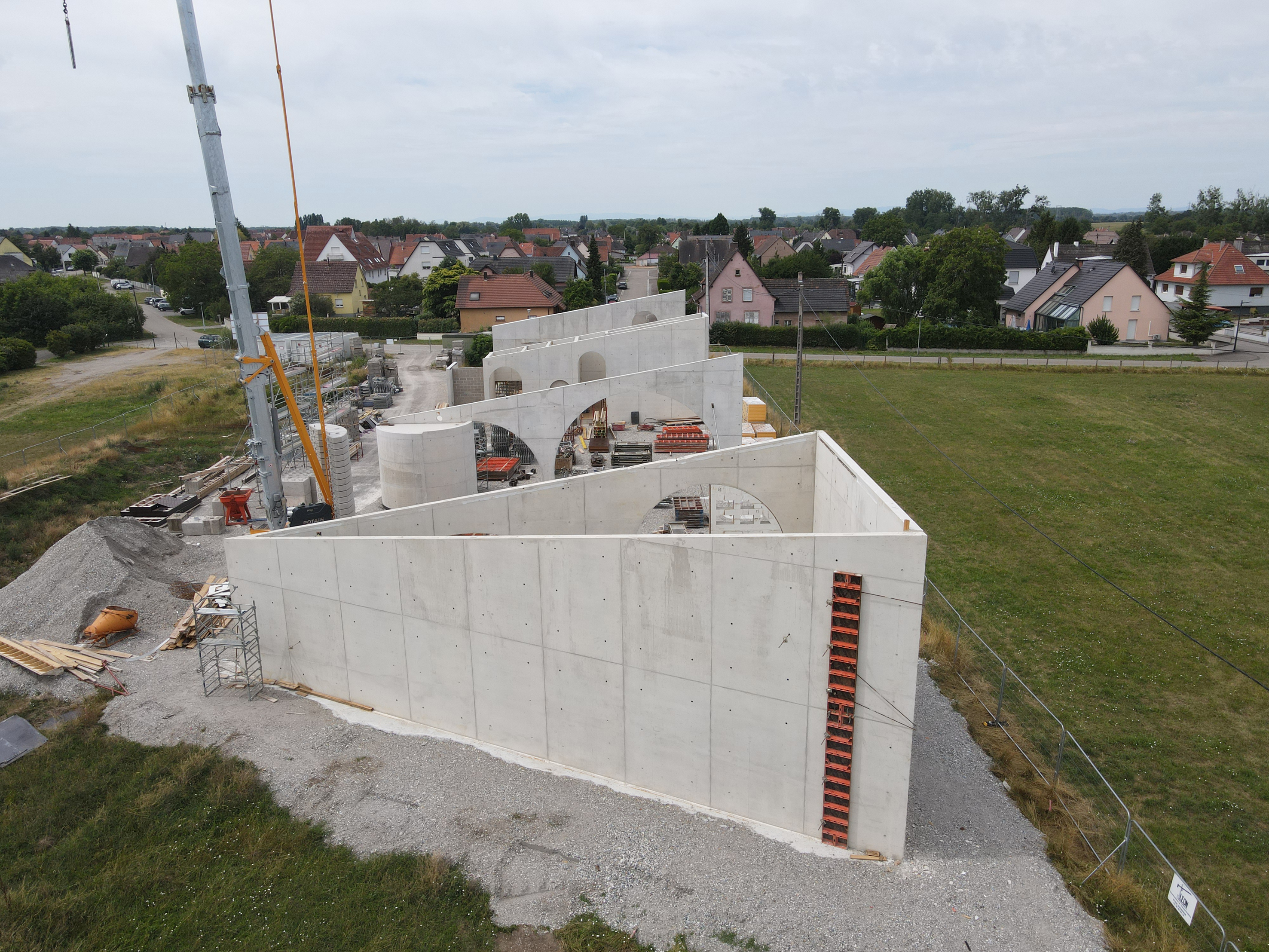
The future technical also serves as a community centre and is open to associations for events and exhibitions. The energy produced by the solar installation should eventually benefit other public facilities.
